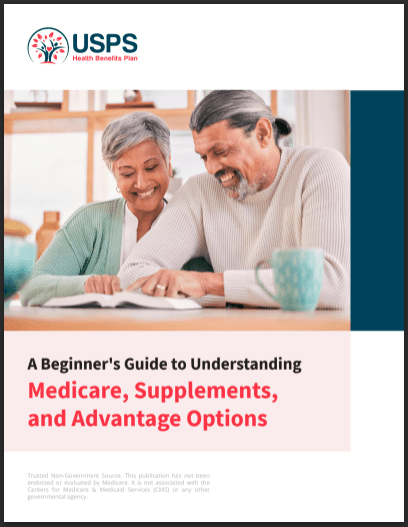Key Takeaways:
- The Special Enrollment Period (SEP) for Medicare Part B is a key opportunity for postal retirees to ensure smooth access to Postal Service Health Benefits (PSHB), especially as the new program starts on January 1, 2025.
- Retirees who miss this window or delay enrolling in Medicare Part B may face higher costs and potential loss of coverage, making the decision during this time critical.
If you’re a postal retiree, there’s a crucial window of time for enrolling in Medicare Part B that you should be aware of. This Special Enrollment Period (SEP) is not just another deadline on the calendar—it’s directly tied to the shift from the Federal Employee Health Benefits (FEHB) program to the Postal Service Health Benefits (PSHB) program. The PSHB will officially launch on January 1, 2025, as part of the Postal Service Reform Act of 2022.
You may wonder why this SEP is important, especially if you’ve been retired for a while or if Medicare wasn’t part of your previous healthcare planning. Let me walk you through why enrolling in Medicare Part B during this special window is a vital step toward maintaining affordable, comprehensive health coverage moving forward.
What Is the Special Enrollment Period?
From April to September 2024, a Special Enrollment Period was open for
USPS retirees and their families to sign up for Medicare Part B. For many retirees, this SEP represented a unique opportunity to avoid
late enrollment penalties that can otherwise add up over time. This SEP is particularly important for anyone who hasn’t already enrolled in Medicare Part B, and it gives you a chance to make sure you’re in the best possible position when the PSHB program officially begins.
The PSHB program will be a significant change for postal employees and retirees alike, and being proactive about your Medicare Part B enrollment is one way to make that transition smoother. It’s also a chance for retirees to take advantage of various cost-saving benefits that will be available under the PSHB plans—many of which are tied to having Medicare Part B in place.
Why Postal Retirees Should Pay Attention
The key thing to know is that if you retired before January 1, 2025, and you’re not already enrolled in Medicare Part B, you’re not required to sign up to keep your
PSHB coverage. However, for those retiring after January 1, 2025, enrolling in Medicare Part B becomes a requirement to maintain your PSHB plan once you’re
eligible for Medicare (typically at age 65). This includes your family members who are covered under your plan.
The Costs of Missing Out on Medicare Part B
Let’s break down the potential risks of skipping this SEP. If you or your covered family members don’t
enroll in Medicare Part B when you’re eligible, it can result in increased out-of-pocket costs for healthcare services. For example, without Part B, your PSHB plan could end up covering less of your
medical expenses, leaving you with higher deductibles or co-pays. In addition, late enrollment in Medicare Part B typically comes with a penalty—a lifelong additional premium, which can take a chunk out of your retirement income. Missing the SEP could mean paying significantly more for your healthcare in the long run.
How Medicare Part B Works with PSHB
Medicare Part B primarily covers outpatient care, doctors’ services, preventive services, and durable medical equipment. By enrolling in Medicare Part B, you’ll integrate its benefits with your PSHB plan to reduce your overall healthcare costs. The key to maximizing this opportunity is understanding how the two work together. Many PSHB plans offer incentives for retirees enrolled in Medicare Part B, such as reimbursement for some or all of the Part B premiums, waived deductibles, or lower out-of-pocket costs for medical services.
These added benefits can significantly ease the financial burden on retirees. By coordinating your
Medicare Part B benefits with your PSHB plan, you’re setting yourself up for a healthier, more financially manageable retirement.
Another big benefit of enrolling in Medicare Part B is how it relates to prescription drug coverage. All PSHB plans for Medicare-eligible retirees will include Medicare
Part D prescription drug coverage, which will likely reduce or even eliminate the need for separate Part D premiums. As drug costs are rising, this integration can help you save money and simplify your healthcare. You’ll no longer need to juggle multiple plans to get comprehensive coverage—it will all be packaged together within PSHB.
Transitioning from FEHB to PSHB: What to Expect
Starting January 1, 2025, all USPS employees and retirees will transition from the Federal Employees Health Benefits (FEHB) program to the new PSHB system. This change is part of the Postal Service Reform Act of 2022, a law that aims to provide more tailored
healthcare options for postal workers and retirees.
During the upcoming PSHB Open Season, running from November 11 to December 9, 2024, you’ll have the opportunity to review your healthcare coverage and make adjustments. This period is crucial for evaluating how your current benefits stack up against the PSHB offerings and ensuring that you’re enrolled in Medicare Part B if necessary. Remember, if you’ve retired before January 1, 2025, you won’t be required to enroll in Medicare Part B, but it may still benefit you to do so.
Keeping Dental and Vision Coverage Through FEDVIP
It’s worth noting that while the PSHB system represents a significant shift in healthcare for postal retirees, it does not affect your access to dental and vision coverage through the Federal Employees Dental and Vision Insurance Program (FEDVIP). Your FEDVIP plan will continue to cover services like dental cleanings, exams, and prescription eyewear without interruption. Open Season will also be your chance to make any changes to these plans if you wish.
The Financial Benefits of Enrolling in Medicare Part B
Enrolling in Medicare Part B during this SEP isn’t just about avoiding penalties. Many PSHB plans will offer specific financial advantages for retirees who have Medicare Part B. For instance, you may be eligible for reimbursements on your Medicare Part B premiums, which can offset the monthly cost of having this additional coverage. On top of that, enrolling in Medicare Part B can help you access lower deductibles, co-pays, and other out-of-pocket expenses under your PSHB plan.
These financial incentives mean that while Medicare Part B does come with a monthly premium, the overall savings you could experience by combining it with your PSHB coverage can more than make up for that cost. It’s a way of ensuring you’re getting the most out of your retirement healthcare plan and keeping your expenses manageable.
Looking Ahead: Open Season 2024
As we move closer to the PSHB launch on January 1, 2025, Open Season (November 11 – December 9, 2024) is your opportunity to prepare. During this time, you’ll have access to tools like the OPM plan comparison tool to help you weigh your options. Whether you’re selecting a new plan or making tweaks to your current coverage, taking advantage of Open Season is essential to optimizing your healthcare coverage.
This is also your time to make sure you and your family members are enrolled in Medicare Part B if necessary. By getting everything in place now, you’ll avoid any unpleasant surprises when the PSHB program officially begins.
The transition to PSHB is a major change for postal retirees, but with careful planning—particularly around Medicare Part B enrollment—you can avoid disruptions in your healthcare coverage. The Special Enrollment Period offered earlier this year was a golden opportunity to sidestep late penalties, and for those retiring after January 1, 2025, staying on top of Medicare Part B requirements will be crucial.
As we near the PSHB Open Season, taking action on your healthcare coverage can help ensure that you’re not only covered but also saving money where possible. Make sure you’re ready for the upcoming shift by reviewing your options, enrolling in Medicare Part B if needed, and optimizing your plan selections during Open Season.











